Discover Wrigley Field’s history and charm on a guided tour in Chicago
With the American season under way, you can step up to the plate at a famed ground in the Windy City.
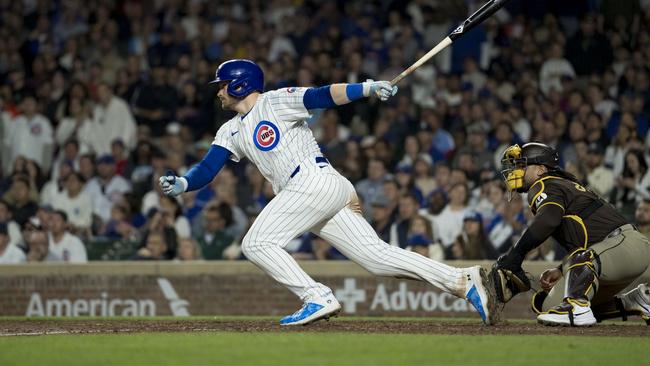
A few minutes into the tour, Sue cautions that if any of us have brought along our grandfather’s ashes we are not allowed to secretly dump them anywhere on the grounds. There are other rules as well: no smoking; no swearing; no scooping handfuls of dirt into pockets. It is 10.30am on a sunny early summer day, and the loamy smell of water on warm grass hangs in the air. My teenage daughter, Sylvie, and I are in the friendly confines – as they are traditionally known – of Wrigley Field in Chicago, taking a tour a few hours before the Cubs face the San Diego Padres.
Tour guide Sue is full of jokes, and has a tendency to ask questions then immediately answer them in her flat-vowelled Windy City accent. Thus our small group of hardcore baseball enthusiasts learns that Wrigley Field is the second-oldest field in all of Major League Baseball. “Who knows the oldest?” Sue asks before instantly continuing. “Fenway (in Boston). Fenway was built in 1912 and we were built in 1914 in what’s called the ‘jewel-box’ design of ballparks, which is when ballparks are squeezed inside a city block allowing fans to be right at the heart of the action.”

I like how Sue says “we” when referring to the ballpark; it speaks to a strong and abiding sense of pride in the city and its sporting teams that Chicagoans share. Wrigley is a beautiful ballpark. There are ivy-covered brick walls on the outfield, soaring double-deckered grandstands flanking the first and third base lines, and a manually operated scoreboard with fluttering pennants atop its great green facade, which has an iconic white-dotted clock face in the centre. At this hour, before the cheers and boos of the crowds – 41,649 at capacity – Wrigley is a peaceful heaven. Little wonder it was designated a National Historic Landmark in 2020.
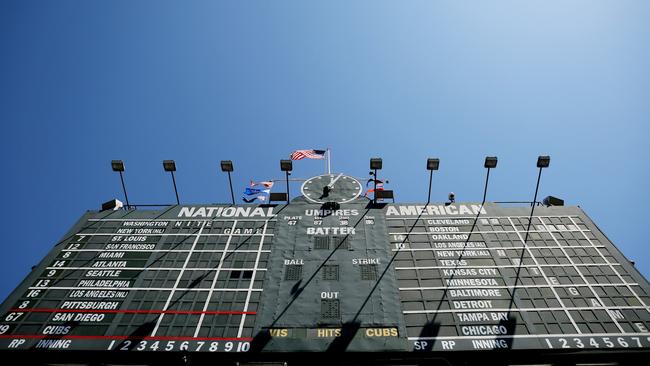
The tour lasts about 90 minutes, leaving a couple of hours to kill before the first pitch. We find ourselves in a thrift store in Wrigleyville, the bar-studded former working-class neighbourhood surrounding the ground. The store is huge and, unsurprisingly, there’s a lot of baseball apparel. Sylvie puts on a Chicago White Sox cap and holds a threadbare “pre-supported” Cubs T-shirt to her chest. “Do I low-key rock this fit?” she says. “Does ‘fit’ mean outfit?” I ask. She confirms it does. I explain that any “fit”, rocked low-key or otherwise, is not allowed to mix franchises like that, especially crosstown rivals such as the Cubs and the Sox. It’s highly improper. She leaves the cap and takes the T-shirt. I buy a scoreboard clock key ring, with the time showing 1.20, which is when all day games at Wrigley Field begin.
Chelcie Ross, the Chicago-born actor who appeared in the 1986 film Major League, throws out the ceremonial first pitch and then Padres ace Dylan Cease takes the ball. I wish I could report that the game itself was an edge-of-your-seat affair but it is a pretty routine affair; the Cubs lose 3-0. But it’s a perfectly pleasant way to spend a summer afternoon.
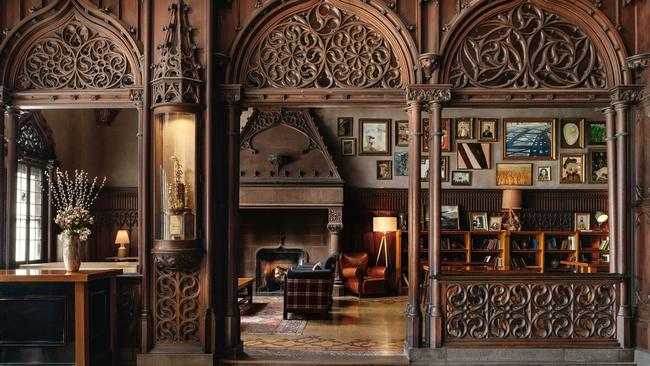
In summer in the US, baseball is everywhere; even our hotel room key cards are baseball-themed. They feature black-and-white photographs of jug-eared Cubs and Sox players from the 1920s. Which is altogether fitting, given that we are staying at the Chicago Athletic Association. Built in 1893 as a private men’s social and sporting club, the hotel sits on bustling Michigan Avenue on the east side of downtown. It is a sprawling property of 240 guestrooms, seven bars and restaurants, two ballrooms, three games rooms and one indoor basketball court. There used to be Turkish baths on the ground floor but it’s now a Shake Shack; in an ideal world the two would coexist at the same time in the same space.
On the seventh-floor rooftop, largely enclosed by an atrium, Cindy’s restaurant has excellent views over Millennium Park. To the left is Anish Kapoor’s famous silver bean sculpture; to the right is the huge and magnificent Art Institute of Chicago, one of Ferris Bueller’s favourite hangouts. The food at Cindy’s is excellent; in a city renowned for its culinary culture (hello, The Bear) this place stands out. The lamb ragu mafaldine – a comforting yet surprising blend of saffron mafaldine pasta, Sichuan peppercorn, basil, olives, parmigiano and chilli oil – is sublime.
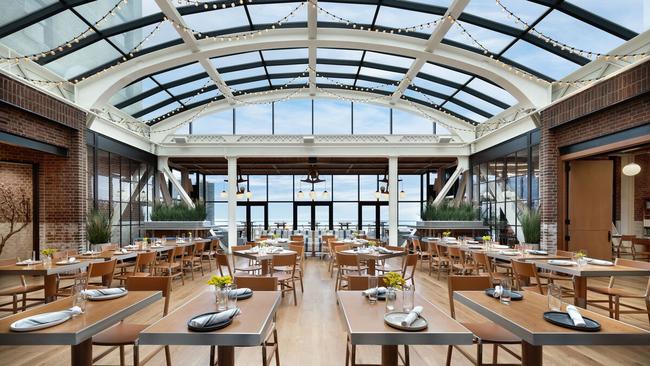
Our roomy suite in the back of the building is among the original accommodations built for sporting club members. It is large and studded with fun period details such as a train car luggage rack above the desk, and a woollen throw rug with a quote from Chicago native actor Gary Cole woven in: “I miss everything about Chicago except January and February.” (Yours from the CAA shop for $329, plus tax.) The sporting theme continues with sweatshirt-fabric bathrobes modelled on boxers’ ring jackets hanging on the door of the white-tiled bathroom.
The next day Sylvie and I take a rattling L (short for “elevated”) train a few blocks west to Willis tower, where we use our CityPASSes to skip the line for the elevators to Skydeck, the highest observation platform in the US. It is a clear day and from up here on the 103rd floor we can see 80km in every direction, which means if we squint we can see bits of Wisconsin, Indiana and Michigan, as well as the vast flatness of Illinois beneath us. There are plenty of Chicago landmarks down there as well, including Wrigley Field, where the Cubs are losing their next game. It’s all very fun and pleasant.
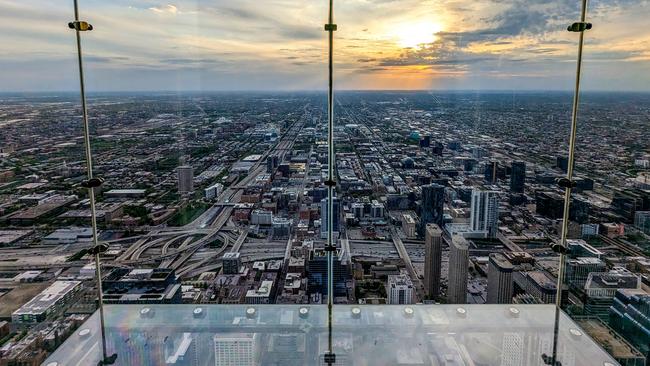
What is not either of those things, however, is The Ledge, a five-sided glass balcony extending from the building’s exterior that allows you to experience being suspended in mid-air 412m – practically half a kilometre – above ground. That is if you can bring yourself to actually enter it. Sylvie strolls straight in and begins fearlessly taking selfies before urging me to join her. I linger inside the building proper, taking deep breaths in the hope I will hyperventilate and pass out. There are several dozen people behind me, all dying to storm into one of the four Ledges and start jumping up and down.
A guide tells me that each Ledge has a load capacity of 4.5 tonnes so I’m in no danger, but if I’m afraid I should try walking slowly backward into the Dangling Death Chamber. This strikes me as the perambulatory equivalent of putting on a blindfold while the firing squad loads its weapons but I try it anyway. It means I have to turn and face a sea of people, all of whom are 1000 times braver than me, including at least half a dozen schoolchildren. “Come on, it’s fine,” my own child says. After a few stumbling reverse steps, I get down on my hands and knees and edge slowly backwards until there is just a few centimetres of laminated glass keeping me from plummeting to oblivion.
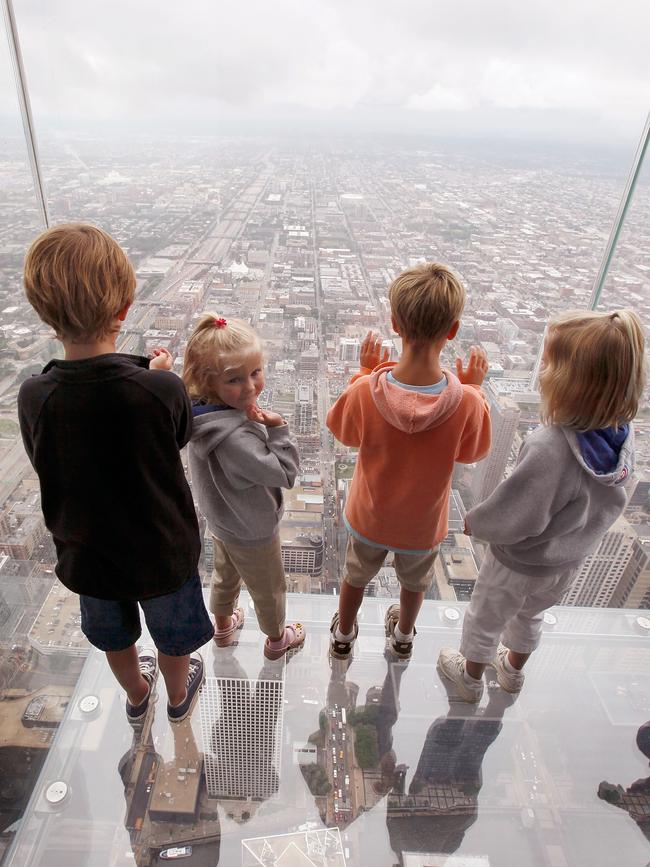
When I finally manage to stand up on shaking legs the waiting crowd applauds. I feel a queasy combination of shame mixed with a dash of triumphant pride. “You did great, dude,” a tall, bearded man tells me as I lurch out moments later. He is wearing a baseball cap with the Wrigley Field scoreboard clock on the crown insisting it is always 1.20pm, game time. In a state of mild astonishment at the coincidence, I pull out my key ring and show it to him. “My brother!” he says, before enveloping me in a friendly bearhug. He is Chicago incarnate – warm, welcoming, brash and big-shouldered – and it’s hard to leave the embrace. Or maybe I’m just glad to be alive after my near-death experience. “C’mon, Dad, let’s go,” Sylvie says. “It’s embarrassing.”
In the know
Guided tours of Wrigley Field last 75-90 minutes; from $US30 ($47) an adult.
Chicago Athletic Association is at 12 S Michigan Ave, downtown Chicago; rooms from $US188 a night.
Visits to Skydeck Chicago, including The Ledge, are $US43.50 an adult (timed entry), children $US35.50.
Sean Condon travelled at his own expense.
If you love to travel, sign up to our free weekly Travel + Luxury newsletter here.




To join the conversation, please log in. Don't have an account? Register
Join the conversation, you are commenting as Logout